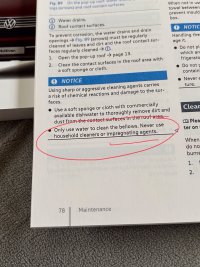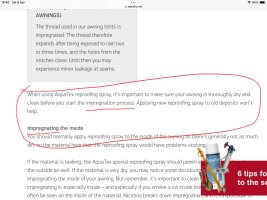Maidment_Ocean
VIP Member
Surely the threads absorb the Aquatex or Fabsil and expand then dry giving the same impact as a wetting cycle with rain but have absorbed the waterproofing compound so better, at least to my mind.Some initial thoughts on the use of Fabsil or Aquatex...
Not sure on Aquatex, but Fabsil is essentially a coating of Silicone. Gold has twice the silicone content than the standard Fabsil.
In simple terms there appears to be two types of tent/awning materials in common use - The thicker canvas type and the light weight nylon type.
With the canvas type they can leak a bit through the needle holes, from what i read online...this is sorted with a few wet/dry cycles, as the stitching thread will expand as it takes in water, then remain expanded when dry, filling the gaps that were around the threads. This is the theory argued by some tent manufacturers.
But...
If the main source of the leaking is thought to be through the needle holes that the threads have passed through? Seems to be the case with our bellows.
That the threads may expand once wet to lessen leaking? Then remain in their expanded state after a few wet/dry cycles?
Then...treating the threads with a water proofing treatment may not be such a good idea?
Waterproofed/Treated threads will absorb less water, and expand less? (and the diy applied treatment may potentially invalidate warranty?)
Unforeseen consequence of water proofing the threads maybe that they do not expand and that the wet/dry cycle that was "designed" into the bellows is messed up?
Seems logical to meMaybe?
I am no expert...but i thought i would put this out there
















